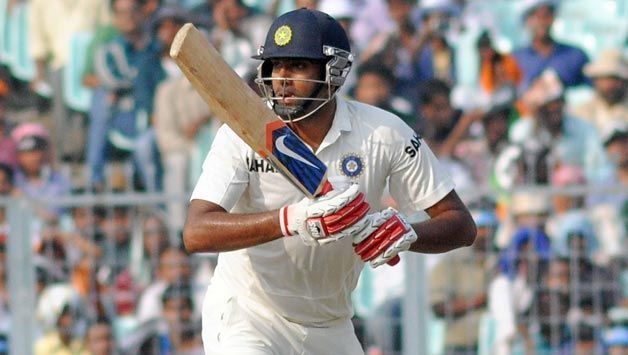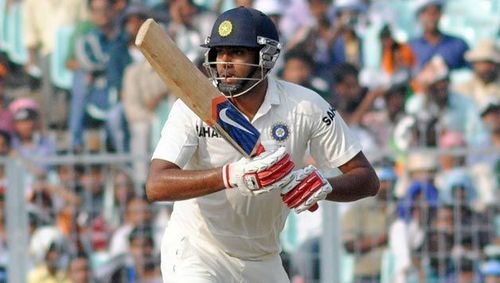
When the scores are level but the Test match is drawn: how it works
Scores level, but match drawn, how does it happen?

It is the final match of the nail biting Test series between India and Pakistan. India need 2 runs of the last ball to win and have 5 wickets in hand. Virat Kohli drives Mohammad Amir down the ground and calls for two.
He completes one run, but is run out while attempting the second run. The scores are level. Chasing a target of 301, India end their innings on 300/6 at the end of 5 days. The players shake hands after an absorbing 5 days of enthralling cricketing action. But wait! What is the result of the match? Is it a draw or a tie? It is confusing. Let us dig further into the rules and find out.
The rules state that in order to win a Test match, the side bowling last must take all 10 of the opposition's wickets, otherwise the match will be drawn, because the batting side's innings is not complete. A match is said to have ended in a tie if the scores are level and the batting side has been bowled out.
Thus, in the above scenario the result of the match would read as - "Match drawn with scores level'.
When and where has it happened before?
1st Test match, England vs Zimbabwe at Bulawayo, Dec 18-22 1996
Batting first, Zimbabwe rose on Andy Flower's 112 to post a competitive total of 376. England responded wonderfully, and Nasir Hussain and John Crawley stuck centuries to lead England's charge. They looked to be a heading towards a total in excess of 500. However, Zimbabwe pulled things back as England lost their last 5 wickets for 60 runs and folded for 406. Zimbabwe came out to bat in the second innings trailing by 30 runs.
Going into the final day, Zimbabwe were leading by 77 runs with 5 wickets in hand. The lower order, led by Guy Whittall and Paul Strang, frustrated the English bowlers till tea on the final day. They were finally bowled out for 234 leaving England with a target of 205 in 37 overs.
England lost captain Atherton early, but Nick Knight and Alec Stewart put on a stand of 137 runs in just 26 overs as England looked to be cruising towards victory. Stewart was out after a well made 73 of just 76 balls. After his dismissal England lost wickets in heaps with only Knight holding one end up.
13 runs were required of the last over bowled by Heath Streak, which boiled down to three of the last delivery. Knight lashed the last delivery towards the cover boundary. He completed two runs but was run out while attempting the third.
England mentally won the match a thousand times, but they were left frustrated with the tactics of Zimbabwe, who retorted to bowling well outside the off stump in the final hour.
3rd Test Match, West Indies vs India at Mumbai, Nov 22-26 2011
After losing the first two Tests, the West Indies were looking to end the Test series on a high. Batting first they made full use of the good batting conditions, as each of their top 6 batsmen passed the half century mark. Darren Bravo was the most impressive of the lost as he produced a scintillating knock of 166 runs.
They finally ended up with a massive total of 590 runs. All eyes were on Sachin Tendulkar when India batted, as he was still stuck on 99 international hundreds. However, it was not to be as he was dismissed for 94. Instead, it was Ravichandran Ashwin who crossed the three figure mark as India posted a respectable score of 482, conceding a lead of 108 runs.
The match sprung into life in the second innings as Pragyan Ojha and Ashwin ripped through the West Indies batting line up. The spin twins took all the 10 wickets as West Indies were dismissed for just 134 runs leaving India with a target of 242 runs in 64 overs.
Batting last India started cautiously. They lost Gambhir early, but Sehwag and Dravid steadied the ship with a 82 run partnership. Sehwag's wicket opened the floodgates as India lost Sehwag, Tendulkar and Dravid within a span of just 12 runs. A young Virat Kohli looked set to be leading India towards victory, but he was dismissed for 63 with India still 18 short. It was left to Ashwin to shield the lower-order as well as push for victory.
Going into the last over, all three results were possible - India needed three runs while West Indies required 2 wickets to wrap up the match. Varun Aaron played out the first three balls and took a single on the fourth, leaving Ashwin with the last two balls. The fifth was a dot ball. Ashwin then drove the last ball to the long on boundary. They ran one, but Ashwin was run out while attempting the second.
India ended on 242/9 and thus ended one of the most exciting Test matches of all time in a draw with the scores level.
Such a situation is extremely rare - it has only occured twice in the 130 year history of Test cricket. However, with teams becoming extremely competitive such results are likely to occur with increasing frequency in the future.